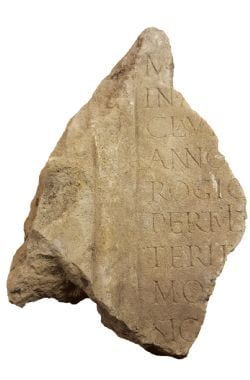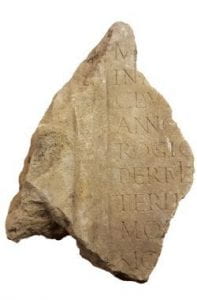Translating Roman history: Lincoln set to host prestigious inscriptions workshop
14 June 2017
New insights into Roman life could be revealed when a collection of ancient inscriptions are re-examined in a workshop at the University of Lincoln, UK. Twenty students from across the UK have been hand-picked to take part in the 10th annual Practical Epigraphy Workshop, which will take place on the University’s Brayford Pool Campus from […]

 New insights into Roman life could be revealed when a collection of ancient inscriptions are re-examined in a workshop at the University of Lincoln, UK.
New insights into Roman life could be revealed when a collection of ancient inscriptions are re-examined in a workshop at the University of Lincoln, UK.
Twenty students from across the UK have been hand-picked to take part in the 10th annual Practical Epigraphy Workshop, which will take place on the University’s Brayford Pool Campus from Tuesday 20th – Thursday 22nd June 2017.
The event is being held in partnership with The Centre for the Study of Ancient Documents, University of Oxford, and The Collection museum in Lincoln, which will be offering up a range of stone and lead Roman objects featuring inscriptions for the students to take away and study. The workshop is supported by grants from the Derby Fund, the Jowett Copyright Trust, and the British Epigraphy Society.
With the help of expert guidance, including that of classicist and cursive Latin specialist Dr Roger Tomlin, the students will gain direct experience of the practical elements of recording and studying inscriptions.
They will get hands-on instruction in the making of squeezes (a reverse copy of an inscription), imaging and measuring inscribed stones using facilities in the University’s conservation labs, and the production of transcriptions, translations and commentaries.
It is hoped that the fresh study of the inscriptions will reveal new insights, both through new technology enabling elements of text previously thought lost to be revealed, and for a modern academic understanding of Latin to prompt revised translations of inscriptions.
Professor Paul Stephenson, Head of the School of History and Heritage at the University of Lincoln, said: “It is an honour to host the workshop and a great opportunity to showcase some of the heritage science techniques we have available here in Lincoln in our heritage and conservation labs, including laser and white-light scanning, x-ray fluorescence, photogrammetry and reflectance transformation imaging.
“We are delighted that the workshop will offer a fantastic opportunity to three of our own second-year students, who will return to their final year of study with new skills and insights.”
Antony Lee, Collections Access Officer at The Collection museum in Lincoln, said: “Lincoln’s Roman heritage is of huge importance, so we were delighted for the opportunity to bring this aspect of the county’s archaeological collections to wider attention. The ability to converse with experts in this field about the significance and interpretation of the inscriptions will enable us to better interpret them to the public.”
As part of the workshop, Dr Roger Tomlin, an Emeritus Fellow of Wolfson College, Oxford, will give a public lecture on his involvement in deciphering the ‘Bloomberg Tablets’, Britain’s largest, earliest and most significant collection of Roman waxed writing tablets. Attendance at the University of Lincoln’s first Annual Roman Lecture (starts 6pm 20th June 2017) is free but prior booking is essential. For more information and to book a place at the public lecture, visit: www.lincoln.ac.uk/events.
